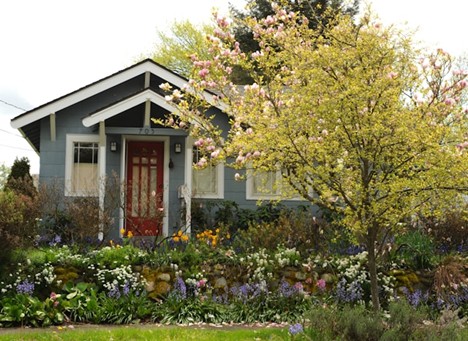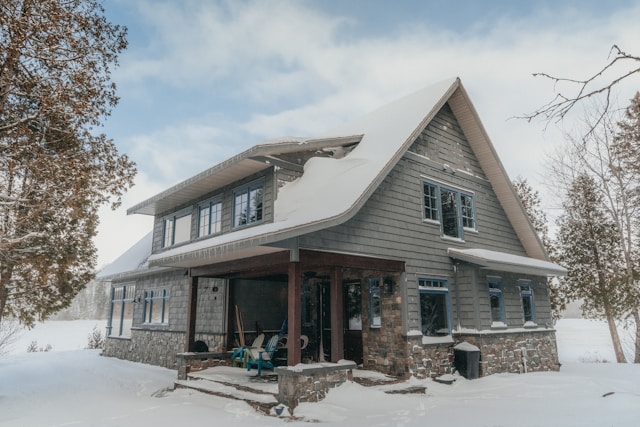
When it comes to owning a home, attention often gravitates toward the interior. However, what’s frequently overlooked is that the very first impression a home makes begins well before anyone crosses the threshold. A well-kept façade isn’t just about curb appeal; it signals care, value, and reliability. Whether you're preparing to sell, safeguarding your investment, or simply aiming to take pride in your property, consistent home maintenance on the outside reflects a commitment to quality and long-term functionality.
When potential buyers, guests, or even neighbors encounter your property, they immediately begin assessing its condition and aesthetic appeal. Overgrown landscaping, chipped paint, cluttered porches, or grime-streaked siding can lead others to assume the interior is similarly neglected. On the flip side, a freshly mowed lawn, neatly trimmed bushes, clean pathways, and sparkling windows suggest a well-cared-for home where maintenance is a priority.
This matters tremendously in real estate transactions. Appraisers and inspectors begin evaluating the property from the moment they arrive. Their initial impressions can subtly influence the tone of their reports. If a home looks neglected on the outside, they may scrutinize more heavily for issues inside. A tidy, attractive exterior can lend credibility to the overall condition of the home, potentially affecting both market value and buyer confidence.
The exterior of your home is its first line of defense against the forces of nature. From torrential rain and snowstorms to sweltering heat and strong winds, your property’s outer surfaces must endure year-round exposure. Roofs, siding, windows, and foundations all serve a vital role in keeping moisture out, maintaining energy efficiency, and protecting structural integrity.
Regular maintenance ensures that small issues don’t snowball into costly problems. Gutters clogged with leaves can overflow and damage your roof or siding. Cracks in the foundation can allow water to seep into the basement. Worn or damaged roofing materials can lead to leaks, mold, and even structural decay. Ensuring proper drainage around the property is essential in preventing water damage, especially as changing weather patterns bring heavier and less predictable rainfall.
One of the most effective and often overlooked maintenance steps is pressure washing. Removing dirt, mold, mildew, and algae from siding, decks, driveways, and walkways not only improves appearance but also prevents long-term degradation. Pressure washing your home’s exterior signals to guests, buyers, and even appraisers that the property is well cared for, which can enhance perceived value and prolong the life of your materials.
Curb appeal has a measurable impact on property value. Numerous studies have shown that homes with clean, visually appealing exteriors sell faster and for more money. Landscaping improvements alone can increase a home’s perceived value by 5 to 10 percent, and exterior upgrades—like replacing an old garage door, refreshing the paint, or updating the front entryway—often yield some of the highest returns on investment.
But boosting value isn't only about aesthetics. A well-maintained exterior reduces the likelihood of hidden issues that can derail a sale. For instance, if a home inspector finds rotten wood around windows, cracked masonry, or a sagging porch, it can raise red flags for buyers. They may request repairs, negotiate a lower price, or walk away from the deal altogether. Addressing these concerns ahead of time positions your home as “move-in ready,” a powerful selling point in any market.
A well-maintained exterior doesn't just look good; it also contributes to a home's energy performance. Gaps in windows, deteriorating caulk, loose siding, or insufficient insulation can allow air to leak, forcing heating and cooling systems to work harder. This inefficiency leads to higher utility bills and an increased carbon footprint.
By ensuring the exterior envelope of the home is sealed and intact, homeowners can significantly improve energy efficiency. Tasks like replacing weather stripping, sealing foundation cracks, updating siding, and maintaining roofing systems all contribute to keeping your home comfortable year-round. Investing in these areas not only reduces operational costs but also demonstrates forward-thinking care that’s attractive to energy-conscious buyers.

Think of your home's exterior as armor. When maintained properly, it protects the vulnerable internal systems - plumbing, wiring, drywall, flooring, and furnishings. Neglect the exterior, and eventually, these internal components will suffer. Water infiltration, pest infestations, and shifting foundations often begin with overlooked exterior flaws. The cost of repairing these problems can be exponentially greater than the cost of preventative upkeep.
Routine inspections can catch early warning signs, such as soft spots on a deck, peeling paint, cracked driveways, or loose gutters. Proactive attention not only saves money over time but also extends the life of the home itself. Many homeowners view exterior maintenance as a chore, but it's more accurately an essential form of preservation. By treating your home's exterior as an ongoing investment, you help protect the entire asset.
Beyond financial implications, the exterior of a home has an emotional impact. Coming home to a clean, well-kept property creates a sense of pride and stability. It encourages homeowners to spend more time outdoors, enjoy their surroundings, and engage with their neighborhoods.
In communities with active homeownership, well-maintained exteriors contribute to higher neighborhood values, greater safety, and stronger community bonds. Neighbors take cues from one another, and seeing one home in pristine condition often inspires others to follow suit. This ripple effect helps cultivate neighborhoods where property values are more resilient and residents are more connected.
The increasing unpredictability of weather events is reshaping how homeowners approach maintenance. Rising temperatures, intense storms, and seasonal extremes are placing new stresses on building materials and landscaping features. Home exteriors that were adequate in the past may now require upgrades to remain resilient.
Installing storm-rated windows, choosing roofing materials that reflect heat, using drought-tolerant landscaping, and creating better drainage systems are just a few examples of how homeowners are adapting. Maintenance is no longer just about upkeep; it’s about fortifying the home to withstand evolving environmental conditions. This shift in mindset is driving smarter decisions about materials, maintenance schedules, and even home design.
Maintaining the exterior of your home goes far beyond aesthetics. It’s a multi-layered effort that affects everything from first impressions and property value to energy efficiency, structural integrity, and emotional well-being. As the environment changes and buyers become more discerning, the importance of exterior maintenance only continues to grow.
Ultimately, a home is one of the most significant investments you’ll ever make. Caring for its exterior is not just about beauty - it's about stewardship, pride, and protecting what matters most. Whether you're staying for the long haul or preparing to sell, your home's exterior is a reflection of your commitment to quality, and that matters more than you might think.